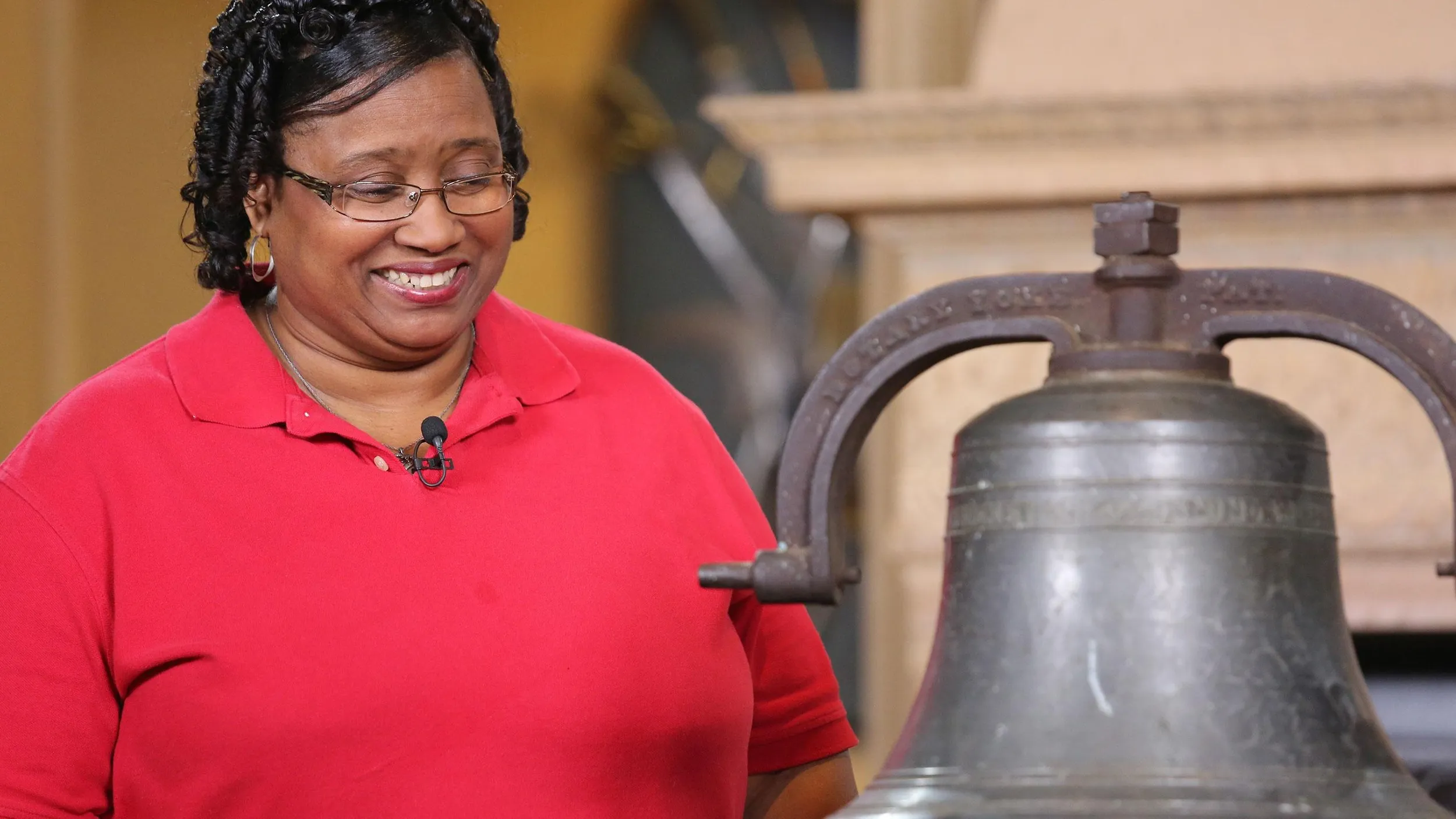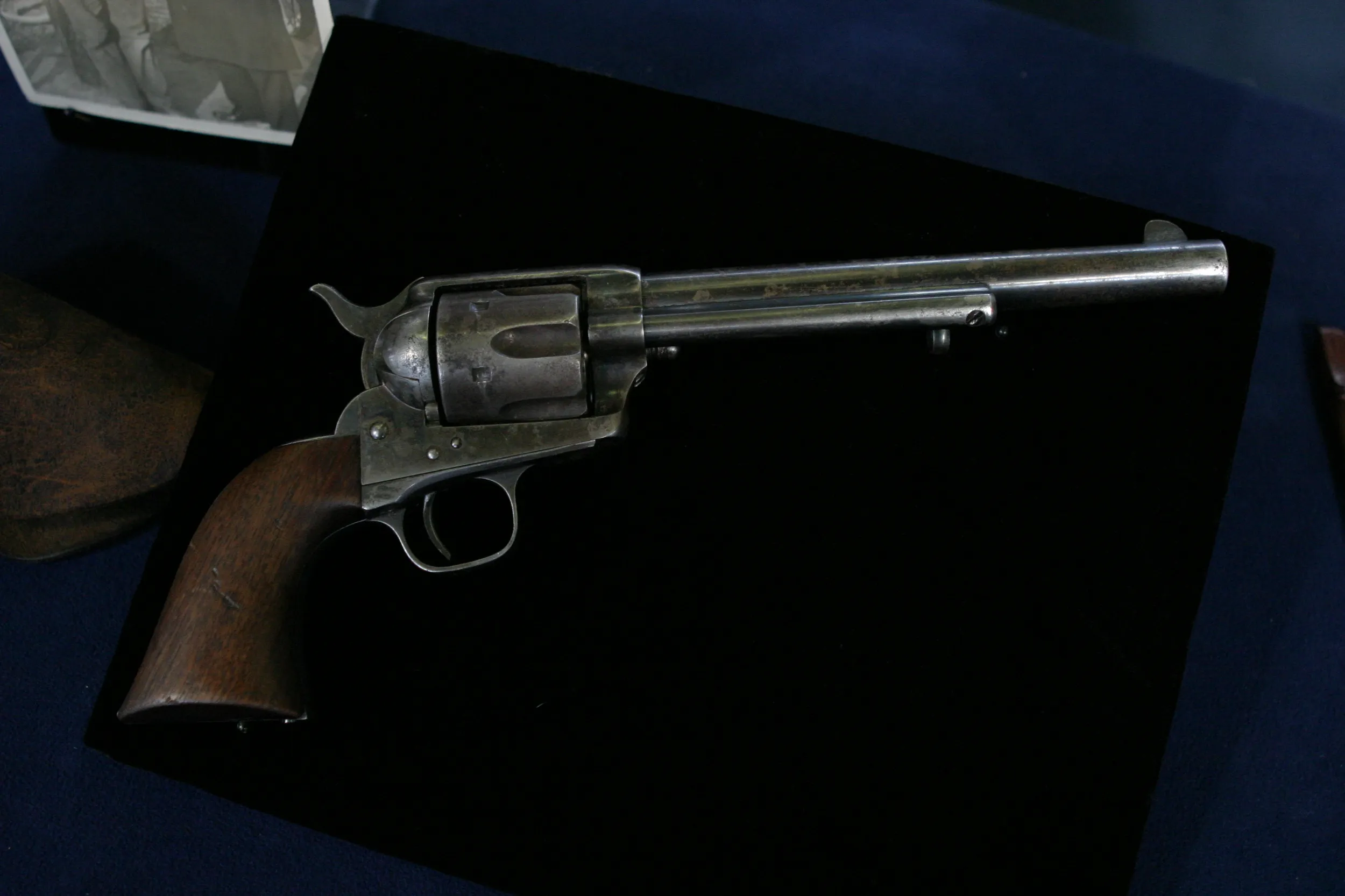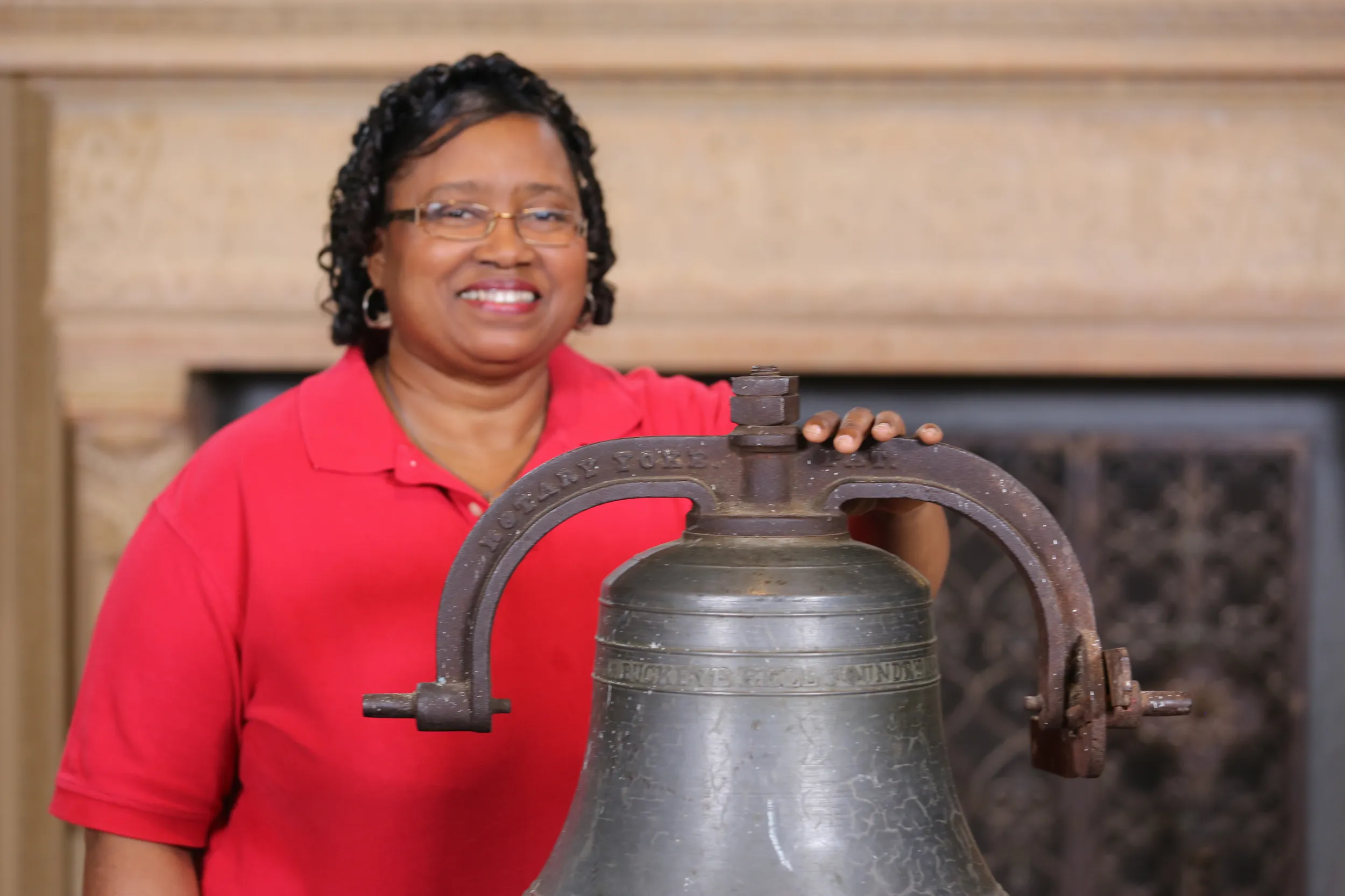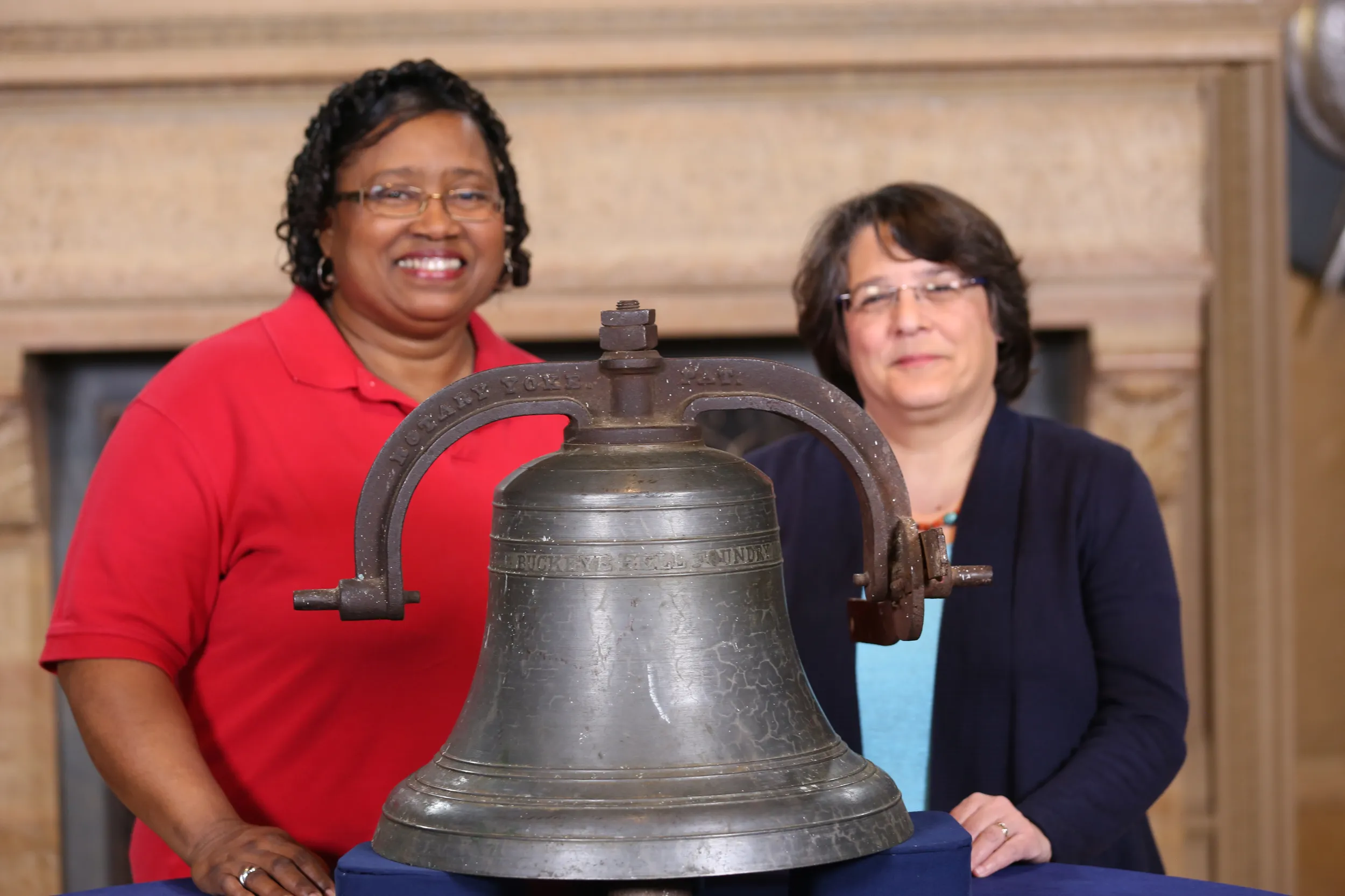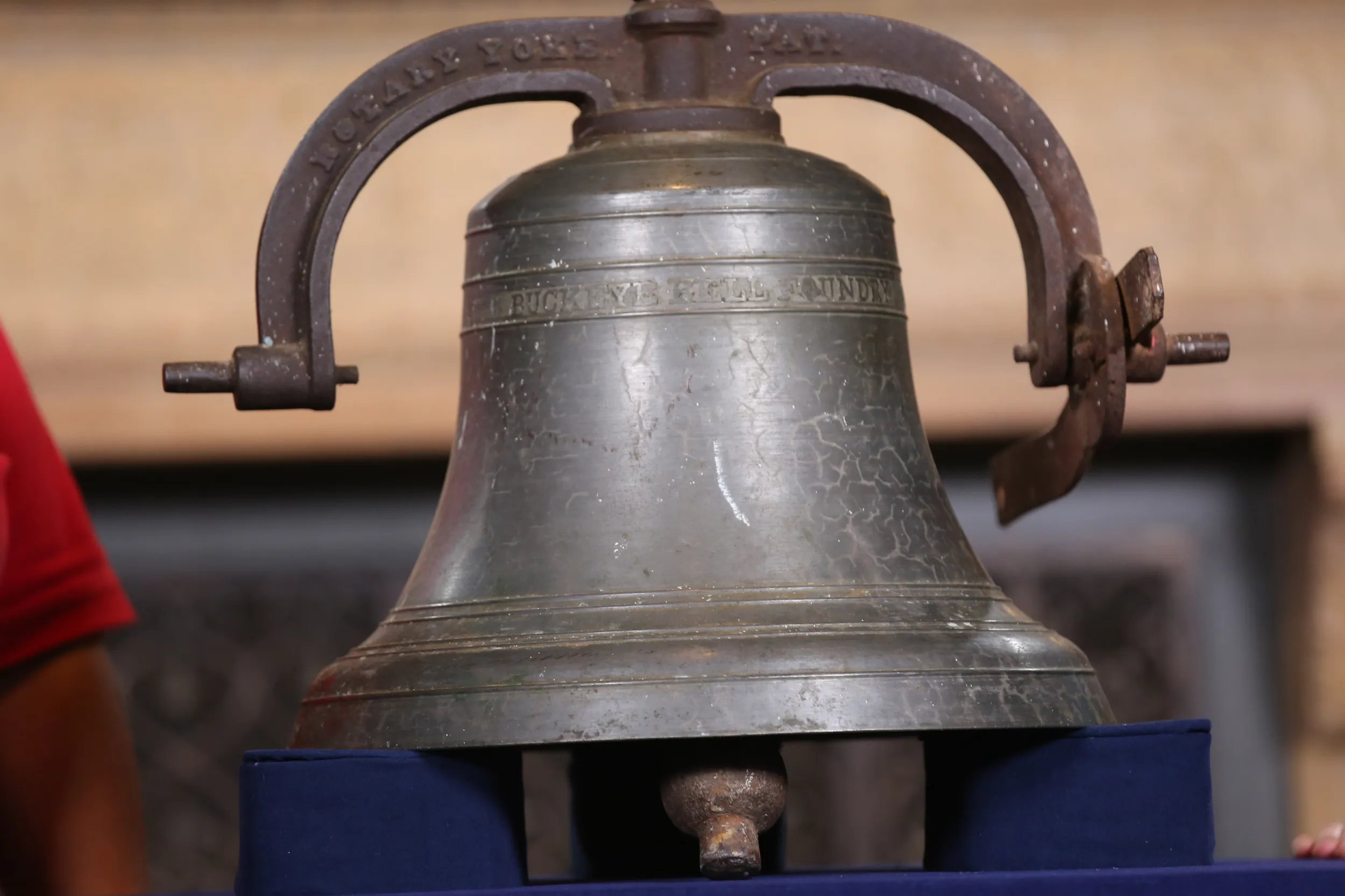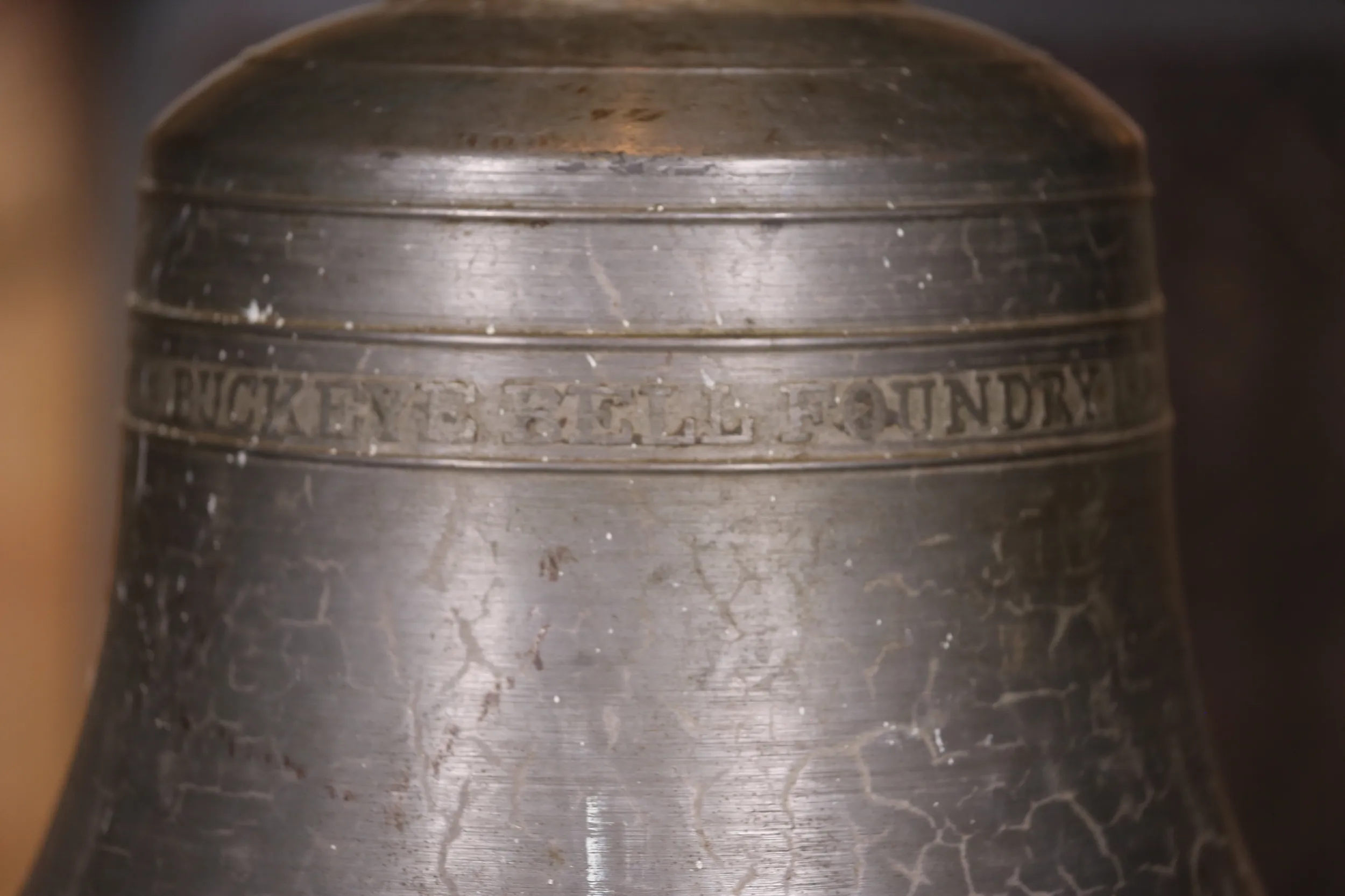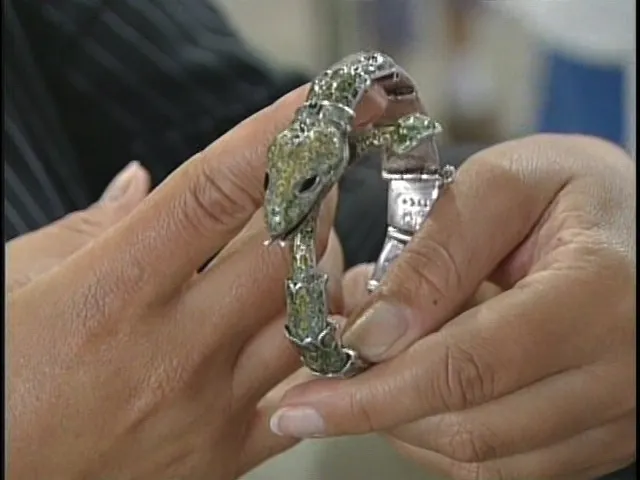GUEST: It's a bell that my dad found in a junk pile on the back roads of Winnsboro, Louisiana.
APPRAISER: Oh, how long ago?
GUEST: I think 30 years ago, I'm thinking.
APPRAISER: It's a big item. So what do you... what do you do with it at home? Is it, do you have it out, or...
GUEST: It just sits at home in my garage.
APPRIASER: Okay.
GUEST: (laughing)
APPRAISER: But you've held onto it all these years.
GUEST: I have; he had it up until 2014, when he passed. He found it on a junk pile.
APPRAISER: Okay.
GUEST: He used to collect junk.
APPRAISER: Okay.
GUEST: He was a junk collector.
APPRAISER: That's what we thrive on!
GUEST: Yes.
APPRAISER: That's why we're all here.
GUEST: So yes, and he came across it, and he just held onto it.
APPRAISER: Do you know what kind of bell it is or what it was used for?
GUEST: I have no idea what it was used for, I just know it's an old bell. I know it's made of brass, so I was told that it should be worth something.
APPRAISER: It's bronze.
GUEST: Bronze?
APPRAISER: It's made out of bronze.
GUEST: Oh, okay.
APPRAISER: So, it's a metal, a metal alloy, so it's copper, copper and tin.
GUEST: Oh, okay. So it's not brass, like they thought it was.
APPRAISER: Yeah, bronze is better.
GUEST: Okay-- okay.
APPRAISER: For a bell.
GUEST: Okay.
APPRAISER: So it's marked, "The Buckeye Bell Foundry," made by Vanduzen and Tift in Cincinnati, Ohio, in 1884. So we know...
GUEST: Right, I saw that on there.
APPRAISER: Yes, we know that this was when it was molded. They were not able to reuse those dated molds. And what's also helpful is that the Vanduzen Company, their trade publications from the 19th century are available, so we actually know what it costs in the day and what the purpose was. And this size and scale bell, this is pretty... it's pretty large. It's pretty heavy,
GUEST: It is heavy.
APPRAISER: Based on the catalogue, the bell itself weighs 100 pounds, and it is the largest of this type. It was made for use in schoolhouses and in public buildings and for plantations.
GUEST: Mm-hmm.
APPRAISER: There's a catalogue from 1900 that exists.
GUEST: Okay.
APPRAISER: If you were to have purchased this at the time, it would have cost you $13.
GUEST: Hmm. $13. (laughing)
APPRAISER: These do come up at auction.
GUEST: Uh-huh.
APPRAISER: They are collectible for the fact... I think people are collecting Southern artifacts.
GUEST: Uh-huh.
APPRAISER: And you'd be looking at an auction estimate in today's market at between $4,000 and $6,000.
GUEST: Between $4,000 and $6,000?
APPRAISER: Yep.
GUEST: Okay. That sounds good, too.
APPRAISER: So it was a good piece of junk to collect.
GUEST: Yes, it is.

